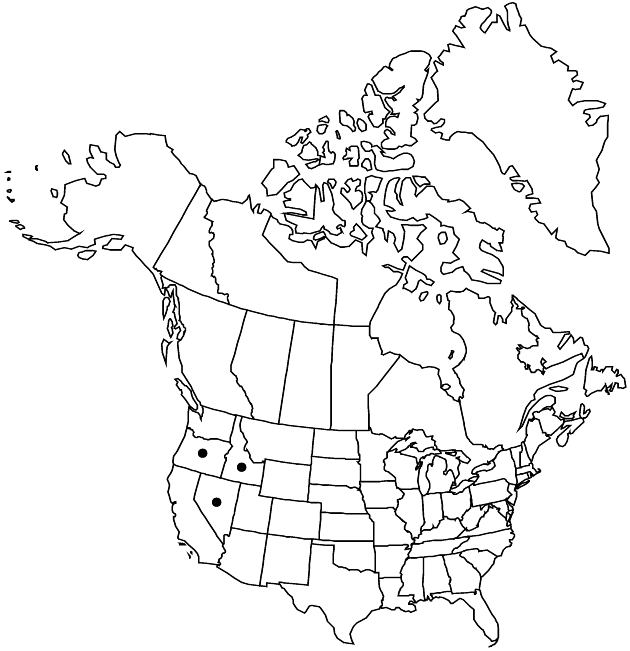Difference between revisions of "Artemisia packardiae"
Brittonia 31: 454, fig. 1. 1979.
imported>Volume Importer |
imported>Volume Importer |
||
| Line 54: | Line 54: | ||
|publication year=1979 | |publication year=1979 | ||
|special status=Endemic;Conservation concern | |special status=Endemic;Conservation concern | ||
| − | |source xml=https:// | + | |source xml=https://bitbucket.org/aafc-mbb/fna-data-curation/src/2e0870ddd59836b60bcf96646a41e87ea5a5943a/coarse_grained_fna_xml/V19-20-21/V19_919.xml |
|tribe=Asteraceae tribe Anthemideae | |tribe=Asteraceae tribe Anthemideae | ||
|genus=Artemisia | |genus=Artemisia | ||
Latest revision as of 19:57, 5 November 2020
Perennials, 20–50(–60) cm, strongly aromatic (rhizomatous, fibrous-rooted). Stems 3–20, erect, light brown, simple or branched, glabrous. Leaves cauline, dark green; blades lanceolate, 1.5–5 × 1–2.5 cm, 2-pinnatifid (primary lobes 5–9, 0.4–1.5 cm; cauline smaller, pinnatifid to entire), faces tomentose (abaxial) or glabrous (adaxial). Heads (peduncles 0 or to 3 mm) in usually paniculiform, sometimes racemiform, arrays 5–20 × 1.5–4 cm. Involucres campanulate to hemispheric, 2.5–3.5 × 2–4.5 mm. Phyllaries broadly ovate, glandular (at least at bases). Florets: pistillate 3–8; bisexual, sometimes functionally staminate, (15–)20–35; corollas bright yellow, 1.3–2.2 mm, glandular. Cypselae (light brown) ellipsoid (± arcuate, ribs 4, prominent), ca. 1 mm, glandular. 2n = 18.
Phenology: Flowering late summer.
Habitat: Coarse taluses, alkaline soils, erosion gullies
Elevation: 1000–2400 m
Distribution

Idaho, Nev., Oreg.
Discussion
Artemisia packardiae is known only from southeastern Oregon, western Idaho, and northeastern Nevada. It is closely related to A. michauxiana and could be considered an ecologic variant.
Selected References
None.